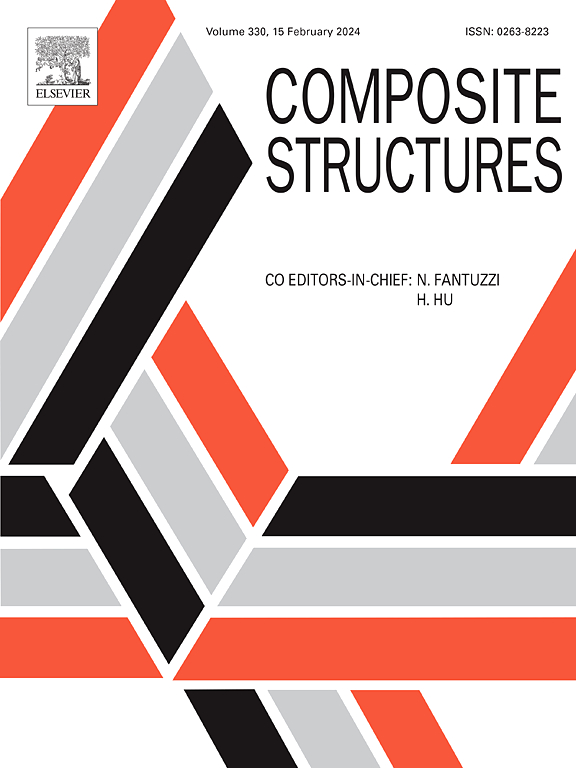Numerical investigations of the vibration damping properties of carbon/flax hybrid fiber-reinforced composite structures with perturbation method
IF 7.1
2区 材料科学
Q1 MATERIALS SCIENCE, COMPOSITES
引用次数: 0
Abstract
The purpose of the present paper is to develop a numerical approach to model and simulate the vibratory behavior of carbon/flax hybrid fiber-reinforced composite structures. Carbon- and flax-fiber hybridization enables to take advantage of both the stiffness of the former and the damping capacity of the latter. The presence of flax fibers in hybrid composites results in a frequency-dependent viscoelastic behavior. Constitutive laws, such as hysteretic, Fractional derivative Zener and Generalized Maxwell, are used to take this viscoelasticity into account. The difference in material per layer, due to hybridization, implies the use of a different constitutive law per layer. The first challenge of these works is to be able to consider various materials, fiber orientations, layer thicknesses and constitutive laws in the modeling of hybrid composite structures. Then, in the case of free vibrations, the structural behavior is simulated to investigate the damping properties of hybrid composites. Damped natural frequencies and structural loss factors are computed. Perturbation technique is used to account for the nonlinear frequency-dependence arising from viscoelastic constitutive laws. In order to validate the proposed approach, examples from the literature are referred to.
碳/亚麻混杂纤维增强复合材料结构减振性能的微扰数值研究
本文的目的是发展一种数值方法来模拟和模拟碳/亚麻混杂纤维增强复合材料结构的振动行为。碳纤维和亚麻纤维杂交能够利用前者的刚度和后者的阻尼能力。混杂复合材料中亚麻纤维的存在导致了频率依赖的粘弹性行为。本构律,如迟滞、分数阶齐纳和广义麦克斯韦,被用来考虑这种粘弹性。由于杂化,每层材料的差异意味着每层使用不同的本构律。这些工作的第一个挑战是能够在混合复合材料结构建模中考虑各种材料、纤维取向、层厚度和本构规律。然后,在自由振动的情况下,模拟了混杂复合材料的结构行为,研究了混杂复合材料的阻尼性能。计算了阻尼固有频率和结构损耗因子。采用微扰技术来解释粘弹性本构律引起的非线性频率依赖性。为了验证所提出的方法,引用了文献中的例子。
本文章由计算机程序翻译,如有差异,请以英文原文为准。
求助全文
约1分钟内获得全文
求助全文
来源期刊

Composite Structures
工程技术-材料科学:复合
CiteScore
12.00
自引率
12.70%
发文量
1246
审稿时长
78 days
期刊介绍:
The past few decades have seen outstanding advances in the use of composite materials in structural applications. There can be little doubt that, within engineering circles, composites have revolutionised traditional design concepts and made possible an unparalleled range of new and exciting possibilities as viable materials for construction. Composite Structures, an International Journal, disseminates knowledge between users, manufacturers, designers and researchers involved in structures or structural components manufactured using composite materials.
The journal publishes papers which contribute to knowledge in the use of composite materials in engineering structures. Papers deal with design, research and development studies, experimental investigations, theoretical analysis and fabrication techniques relevant to the application of composites in load-bearing components for assemblies, ranging from individual components such as plates and shells to complete composite structures.
 求助内容:
求助内容: 应助结果提醒方式:
应助结果提醒方式:


